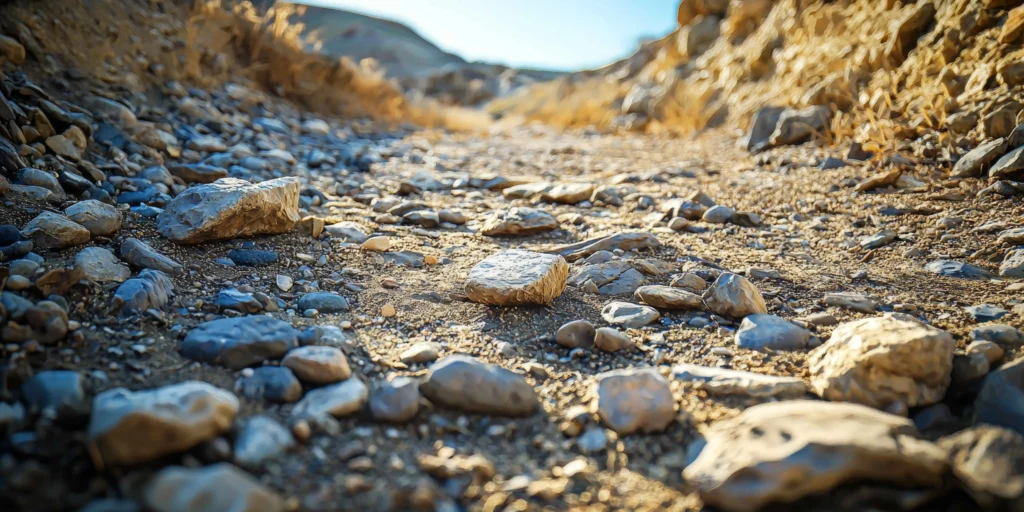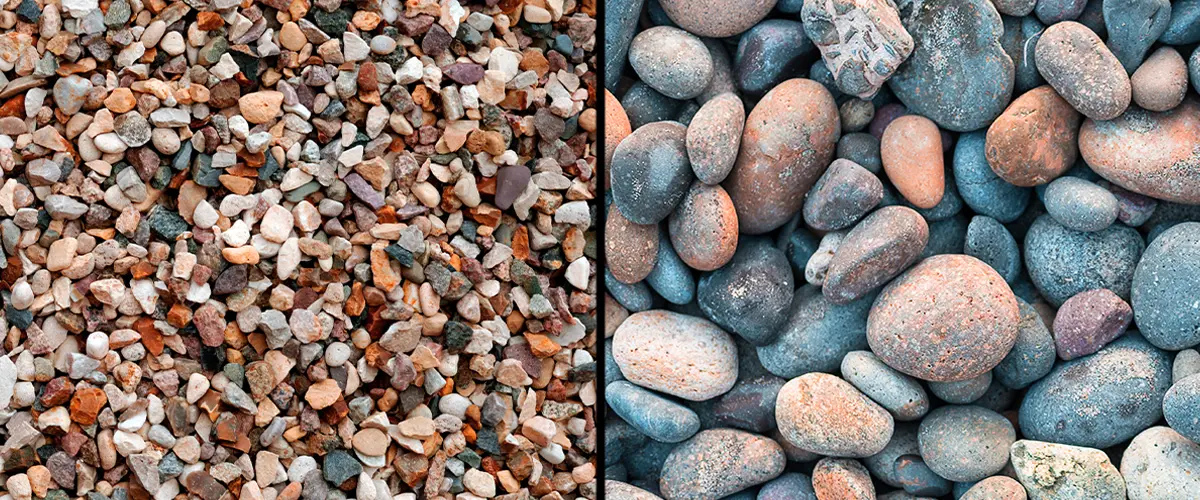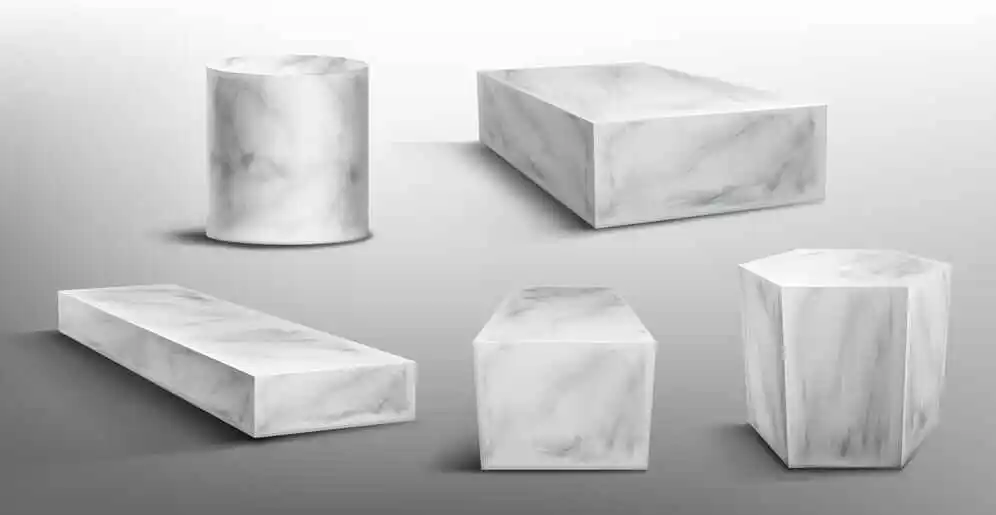Crushed Stone vs. Gravel Pea Gravel: Choosing the Best Material for Your Landscape and Construction Projects Are you choosing between overwhelmed stone and pea gravel on your new mission? Both substances can superbly enhance your outdoor place. Crushed stone has a rugged, angular look that gives stability. Making it perfect for driveways and pathways. gravel Pea gravel is easy and spherical, creating a softer look for gardens. Consider your undertaking’s desires: durability, drainage, and visual appeal. Weigh the pros and cons of every choice to make an excellent preference.
Table of Contents
What is gravel?
Before we speak the difference among stone and pea gravel. let’s recognize what gravel is. Gravel is crafted from tiny rocks and stones. Many methods use it, including building roads, making paths, and planting gardens. Different kinds of gravel serve precise purposes. Two of the maximum unusual types are beaten stone and pea gravel.
Understanding the Differences
Size and Texture
She overwhelmed stone and gravel pea gravel in size, texture, and colour.
- Pea Gravel: This gravel is usually three/8 inches long, much like a small marble. It is smooth and rounded, making it very comfortable to walk on.Its smooth edges give it an appealing look and feel.
- Crushed Stone: This cloth comes in sizes from 3 inches to four inches. It has sharp edges and an uneven texture as it’s made by way of crushing large rocks. Crushed stone is specifically white and gray, providing a easy and understated appearance.
Uses of Crushed Stone
Crushed stone is distinctly versatile and may be used for plenty exceptional responsibilities. Here are some not unusual use of:
- Foundations: Crushed stone is top notch for building strong foundations. It is used as a base under concrete or asphalt and is considered sturdy, durable roads and driveways.
- Drainage Systems: This form of gravel is proper for drainage. It lets in water to go with the drift away, stopping flooding in regions like basements or gardens.
- Driveways and Parking Lots: Crushed stone is used for driveways. It can withstand heavy loads, making it a clever choice for regions where cars might be pushed.
- Backfill: When constructing a area, humans dig holes for homes or fences. Crushed stone is used for this reason, as it stabilizes the area.
- Bedding for pipes: Crushed stone can be used as bedding cloth. This helps keep the pipes in the area and forestalls them from breaking.
- Erosion Control: In areas in which soil washes away without problems. Overwhelmed stone can help prevent erosion. It creates a barrier that maintains soil in the region.
Advantages of Crushed Stone
- Solid and Durable: Crushed stone is powerful. It can face up to heavy weight and may not smash down. I am making it ideal for excessive-web site-tourist regions.
- Versatile: Crushed stone’s versatility shines in its range of sizes. This adaptable cloth reveals purpose in diverse tasks. From paving roads to adorning flower beds, its packages span wide.
- Good Drainage: Crushed stone allows water to skip. Which allows for drainage and forestalls puddles from forming.
- Cost-Effective: Crushed stone is commonly less expensive than different materials. I am making it a finances-best alternative.
Disadvantages of Crushed Stone
- Rough Texture: The sharp edges of the stone are uncomfortable to walk on, especially for kids or pets.
- Can Shift: Crushed stone can shift through the years if it is not well contained, which may require upkeep.
Using Pea Gravel
Pea gravel is specially well-known for its splendor and smooth texture. Here are a few commonplace uses:
- Decorative Gardening: Pea gravel is used in gardens to add color and texture. It may be unfolded around flowers to create a lovable panorama.
- Walkways and Patios: Pea gravel makes awesome paths and patios. Its easy texture is comfortable to stroll on and looks splendid exterior.
- Playgrounds: Many playgrounds use gravel pea gravel as a steady floor. It is tender enough to cushion falls, making it more secure for children.
- Drainage: Like overwhelmed stone, gravel pea gravel is appropriate for drainage. It can be utilized in spherical pipes or lawn beds to help water flow away.
- Filling Spaces: Gravel Pea gravel can fill the gaps among patio pavers or stones. It affords a pleasant look while retaining the place’s durability.
- Water Features: If you have a pond or fountain, gravel pea gravel is used to create a beautiful appearance.
Advantages of Pea Gravel
- Soft and Smooth: Gravel pea gravel feels splendid underfoot. It is cushty to stroll on and best for paths and playgrounds.
- Aesthetic Appeal: Gravel pea gravel’s bright sun shades and smooth texture make it attractive. It can beautify your garden or outdoor space.
- Accessible to Work With: Gravel pea gravel is lightweight and clean to spread. I am making it a well-known desire for DIY responsibilities.
- Good Drainage: Gravel pea gravel allows water to drain. I am stopping puddles and supporting regions to live dry.
Disadvantages of Pea Gravel
- Can Shift Easily: Gravel pea gravel can shift round quickly because it is small and spherical. It can also must containment with edging materials like bricks or wooden.
- Not as Stable: Gravel pea gravel is much less extreme than overwhelmed stone in regions . It also can must extra upkeep to maintain its appearance.
Comparing Costs
The fee of the overwhelmed stone and gravel pea gravel can range depending on your amount. Here are a few pointers that will help you understand pricing:
- Get Quotes: Contact nearby providers and ask for price estimates. Based on the amount of gravel you must, they can tell you how excellent a deal you want to pay.
- Consider Delivery: Some businesses price greater for delivery. So ask about that after getting prices.
- Check Quality: Make sure you’ve got tremendous substances. Sometimes, cheaper options may be much less long-lasting.
Environmental Impact of Gravel Pits
Gravel is regularly taken from places known as gravel pits. These are areas where humans dig up gravel, sand, and stones. At the identical time, gravel is essential for manufacturing and landscaping. There are a few environmental effects to bear in mind:
- Erosion: Digging up gravel can cause soil erosion. This occurs when the top layer of soil washes away, harming the land and nearby water bodies.
- Habitat Disruption: Gravel pits can disrupt the habitats of animals and plants. When areas are dug up, the environment can alternate for the creatures that live there.
- Water Quality: If gravel pits aren’t appropriately managed. They will affect the first-rate nice of nearby water. This can appear if sediment washes into rivers and streams.
- Noise and Dust: Gravel pits may be noisy and create dust, affecting nearby citizens.
To restriction the effect, gravel pit operators should follow environmental pointers. These consist of the usage of gadget that reduces dirt and erosion. And restoring regions after excavation.
How to Find a Gravel Pit Near You

When you need gravel, finding the right gravel pit is vital. Here are some guidelines to help you discover one near you:
- Use Online Maps: Websites like Google Maps can help find out gravel pits close by. In the hunt bar, type “gravel pit close to me.”
- Ask Locally: Talk to nearby production businesses or landscaping transport stores. They often apprehend the wonderful places to get gravel.
- Check Online Directories: Many on-line directories listing gravel providers. You can find out their locations and the forms of gravel they provide.
- Visit Landscaping Stores: Local landscaping transport stores may additionally additionally promote gravel. They can endorse nearby gravel pits.
- Call Ahead: Once you find a gravel pit, it’s a concept to name it and check its hours and the varieties of gravel it offers.
Visiting a Gravel Pit
If you discover a gravel pit, touring it before shopping is a clever concept. Here’s what to do:
- Safety First: Follow any protection guidelines on the gravel pit. Wear appropriate clothing and shoes, and be aware of caution symptoms.
- What to Bring: Bring measuring tape or a discipline to collect a gravel sample. This will help you decide how much you need.
- Look at the Gravel: Check the first-rate of the gravel. Make sure it is spotless and has the precise duration of your assignment.
- Ask Questions: Talk to the frame of workers about pricing and delivery alternatives. They allow you to align what you want with your mission.
Conclusion
Both stone and gravel pea gravel have specific advantages and are helpful in conditions. Understanding their differences will help you choose the proper material for your project. You want a mixture like crushed stone or an ornamental and mild desire like pea gravel. Both can decorate your landscaping and introduction obligations. If you need help figuring out which fabric to choose? traveling with a material professional is higher. They can offer tailor-made recommendations based primarily on your assignment’s needs. For professional steering, reach out to the group at Gardenscape Papamoa nowadays!
Which is higher for drainage, crushed stone or pea gravel?
Crushed stone and gravel may be used for drainage. But, pea gravel is preferred for areas where aesthetics are important . such as gardens and spherical water features.
Can I use pea gravel for my driveway?
While pea gravel may be used for driveways. Crushed stone is often favored because it provides more solid ground.
Is crushed stone more luxurious than pea gravel?
The rate can vary depending on your region and the company. Generally, the overwhelmed stone is barely more costly due to its durability.
How many overwhelmed stones or pea gravel do I need for my venture?
The amount you need will depend on the dimensions of your challenge. Measure the area you need to cover and ask suppliers for insurance. Estimates are primarily based on the type of gravel you select.
How can I find a gravel pit near me?
To find gravel pits in your region. Use online maps, ask nearby advent corporations, or visit landscaping supply shops.
Is pea gravel clean enough to paint with for DIY initiatives?
Yes! Pea gravel is lightweight and easy to unfold. Making it a famous choice for DIY landscaping projects
Can I mix beaten stone and pea gravel in my landscape layout?
Absolutely! Mixing both materials can create visible interest and texture for your panorama format . As long as you remember the ideal wishes of each region.
How do I pick between overwhelmed stone and pea gravel for my landscaping venture?
Consider the reason for your challenge. If you need a sturdy driveway or heavy-load base, overwhelmed stone is a higher choice. Pea gravel is ideal for decorative contact for gardens or walkways.
Is pea gravel appropriate for pets?
Pea gravel is tender and relaxed for pets to stroll on, making it a first-rate choice for pet regions. But to save you moving, make certain it is contained well.
What shades are available for crushed stone and pea gravel?
Crushed stone is usually available in white, gray, and other impartial tones. At the same time, pea gravel is available in a greater variety of colors. Including browns, reds, and blues, which allows for more layout flexibility.
How deep have I lay beaten stone or pea gravel for landscaping?
For landscaping, beaten stone and pea gravel must be two to four inches. This allows for drainage and insurance.
Can I use pea gravel in my lawn beds?
Yes! You can use pea gravel in lawn beds to decorate drainage, lessen weeds, and add a decorative touch.

